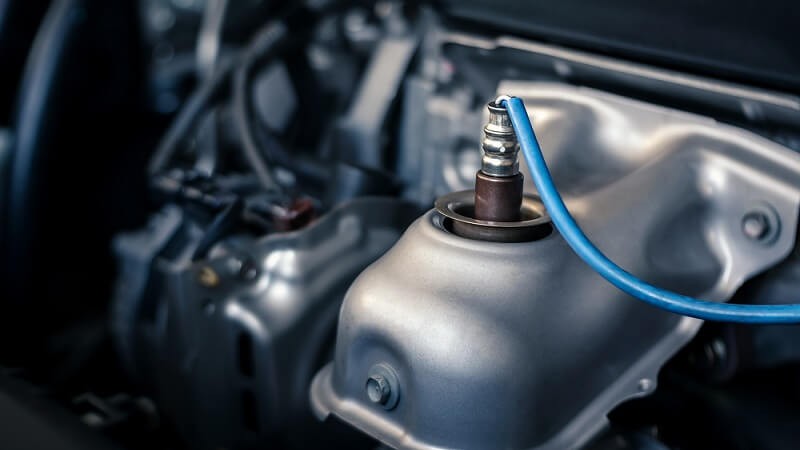The dreaded check engine light illuminates your dashboard. A quick scan reveals the trouble code: P0130 – Heated Oxygen Sensor Bank 1, Sensor 1 Circuit Malfunction. Now you need to locate the culprit. This guide pinpoints the 02 Sensor Bank 1 Sensor 1 Location and provides essential information for diagnosis and replacement.
Understanding Oxygen Sensors and Bank 1 Sensor 1
Oxygen sensors (O2 sensors) are vital components in your vehicle’s emission control system. They measure the oxygen content in the exhaust gases, enabling the Engine Control Unit (ECU) to adjust the air-fuel mixture for optimal combustion. “Bank 1 Sensor 1” refers to the upstream oxygen sensor located on the engine bank containing cylinder number one. It’s positioned before the catalytic converter. This sensor plays a critical role in fuel efficiency and emission control.
Upstream vs. Downstream Oxygen Sensors
O2 sensors are categorized as upstream or downstream based on their position relative to the catalytic converter. Upstream sensors (Sensor 1), like the Bank 1 Sensor 1, monitor oxygen levels in the exhaust directly from the engine, enabling real-time air-fuel mixture adjustments. Downstream sensors (Sensor 2), located after the catalytic converter, monitor its efficiency. Bank 1 Sensor 1, being upstream, is crucial for immediate engine performance optimization.
Locating the 02 Sensor Bank 1 Sensor 1
Finding the Bank 1 Sensor 1 usually involves these steps:
- Consult Your Vehicle’s Repair Manual: This provides detailed diagrams and sensor locations.
- Identify Cylinder Number One: Determine which side of the engine houses cylinder #1. This dictates Bank 1.
- Trace the Exhaust Manifold: Bank 1 Sensor 1 is typically mounted on the exhaust manifold of Bank 1, before the catalytic converter.
Common Symptoms of a Faulty Bank 1 Sensor 1
A failing Bank 1 Sensor 1 can manifest in several ways:
- Illuminated Check Engine Light: Often accompanied by trouble code P0130 or related codes.
- Decreased Fuel Economy: A malfunctioning sensor can lead to a richer air-fuel mixture, consuming more fuel.
- Rough Idling or Stalling: Inaccurate readings disrupt proper combustion, causing unstable idling.
- Reduced Engine Performance: Hesitation, misfires, or power loss can occur.
- Increased Emissions: A faulty sensor impacts catalytic converter efficiency, resulting in higher emissions.
Replacing Bank 1 Sensor 1
Replacing this sensor is often a DIY task. You’ll need tools like an oxygen sensor socket, ratchet, and penetrating oil. Safety first: disconnect the battery’s negative terminal and ensure the engine is cool. Apply penetrating oil to loosen the old sensor, disconnect the electrical connector, and remove the sensor. Install the new sensor with anti-seize compound, reconnect the connector, and clear any trouble codes.
Maintaining Your Oxygen Sensors
Prolong the life of your O2 sensors with these tips:
- Use Quality Fuel: Avoid contaminants that can damage the sensors.
- Regular Maintenance: Keep your engine tuned and address issues promptly.
- Avoid Short Trips: Allow the engine to reach operating temperature to prevent carbon buildup.


